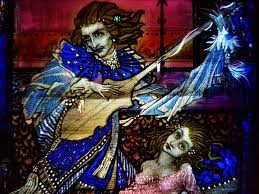John Keats: Revolutionary Romantic

Jenny Farrell marks the 200th anniversary of Keats's death. The image above is of Keats on his deathbed, by his friend Joseph Severn
G. B. Shaw stated that “Keats achieved the very curious feat of writing a poem of which it may be said that if Karl Marx can be imagined writing a poem instead of a treatise on Capital, he would have written Isabella.” Shaw’s view clashes with that of most mainstream critics, who deny Keats any political thought and declare him a worshipper of some unspecified ‘Beauty’. This month marks the 200th anniversary of Keats’s death and is an opportunity to spend a moment reclaiming this revolutionary romantic.
The English and then the American and French revolutions had demonstrated the irreversible arrival of capitalist society, in Europe and elsewhere. Conservative governments across Europe understood and feared the implications of these revolutions, and reacted with increased conservatism and suppression of democratic movements. Although Britain already was a bourgeois society, it now feared insurrection by the working classes, and became a repressive regime itself.
English and Scottish Romanticism is the first expression of radical self-criticism of post-revolutionary and increasingly industrial capitalist society. In its most advanced proponents, like Shelley, the vision reaches beyond bourgeois society and nurtures the first of the working-class movements, the Chartists.
When the Frame-Breaking Act of 1812 made the destruction of mechanised looms a capital felony, Byron used his 1812 maiden speech in the House of Lords to side with working people against this government tyranny. Wordsworth and Coleridge had joined the conservative establishment, arguing for repression, restoration and counter-revolution, for which Byron takes them to task in his opening stanzas of “Don Juan”.
Radicals and Dissenters
Keats stands alongside Shelley and Byron as an upright defender of humankind, against its enslavement and destruction. Born and educated in the Dissenter tradition, Keats became an apothecary, a doctor for the poor. When Keats left medicine for poetry, he entered the circle of the radical writer Leigh Hunt. Other members of this group were the brilliant critic, Dissenter and radical William Hazlitt, the painters Benjamin Robert Haydon and Joseph Severn (the latter would eventually accompany Keats on his final journey to Italy), John Hamilton Reynolds, who shared Keats’s religious disbelief, and Shelley.
Two of the poems written at this time, Written in Disgust of Vulgar Superstition and To Kosciusko - the latter co-written with Coleridge and Hunt - express themes that would be part of his continuing principled stand against the Christian religion and in favour of an international outlook on politics. While Keats’s most accomplished poetry contains these ideas in a less overt form, they are nonetheless present, and were easily understood by the Tory press, who dismissed him as a “Cockney poet”.
Here are the stanzas Shaw refers to:
XIV.
With her two brothers this fair lady dwelt,
Enriched from ancestral merchandize,
And for them many a weary hand did swelt
In torched mines and noisy factories,
And many once proud-quiver’d loins did melt
In blood from stinging whip; - with hollow eyes
Many all day in dazzling river stood,
To take the rich-ored driftings of the flood.
XV.
For them the Ceylon diver held his breath,
And went all naked to the hungry shark;
For them his ears gush’d blood; for them in death
The seal on the cold ice with piteous bark
Lay full of darts; for them alone did seethe
A thousand men in troubles wide and dark:
Half-ignorant, they turn’d an easy wheel,
That set sharp racks at work, to pinch and peel.
XVI.
Why were they proud? Because their marble founts
Gush’d with more pride than do a wretch’s tears? -
Why were they proud? Because fair orange-mounts
Were of more soft ascent than lazar stairs? -
Why were they proud? Because red-lin’d accounts
Were richer than the songs of Grecian years? -
Why were they proud? again we ask aloud,
Why in the name of Glory were they proud?
Keats describes ruthless global exploitation, something we easily recognise today: in mines, in factories, in rivers, and at sea. While these stanzas are unusually direct for Keats, he evokes an aspect that becomes increasingly central to his poetic idea: how the human senses are destroyed in what he refers to as the ‘barbaric age’ of capitalism. He captures and depicts these times as inappropriate to humanity. “Ode to a Nightingale” is heartbreaking in its description of an unnatural world:
Fade far away, dissolve, and quite forget
What thou among the leaves hast never known,
The weariness, the fever, and the fret
Here, where men sit and hear each other groan;
Where palsy shakes a few, sad, last grey hairs,
Where youth grows pale, and spectre-thin, and dies;
Where but to think is to be full of sorrow
And leaden-eyed despairs,
Where Beauty cannot keep her lustrous eyes,
Or new Love pine at them beyond tomorrow.
‘Beauty’ evolves as Keats’s measure for a humane world. A profit-driven society that insatiably pursues money at all costs, including brutal repression and wars, destroys beauty. In a society like this, “the Ceylon diver … went all naked to the hungry shark; / For them his ears gush’d blood” and here “but to think is to be full of sorrow”. Yet, despite it all, Keats shows that beauty arises as human potential, over and over again with every new generation.
And beauty is felt through the senses. For Keats, fully realised human potential means humans can appreciate the world through their senses. Capitalism destroys these senses: loins and ears gush blood, eyes are hollow, eyes are leaden. While the reader has to activate mentally all senses to ‘live’ the images, the actuality of this potential lies in the future. The building blocks exist. Humanity has the ability to experience with all its senses the beauty of a humanised world. In the world as it is, this potential is thwarted; “Beauty cannot keep her lustrous eyes”.
Keats focused his poetics on what defined a truly human world, a place where humans are at one with themselves and their environment. He believed that human beings could only develop their full sensuous potential in a world with which they were at one. In the world of 19th century Britain and Europe, this was patently impossible. Keats explores the nature of this beauty in his great odes of 1819.
Ode to Psyche is about the poet’s calling as priest of the human soul. The fact that the human soul has become the proper god and that the poet feels compelled to be her priest indicates Keats’s heightened awareness of the artist’s social responsibility. Art replaces religion as the sanctuary for the human psyche: “Yes, I will be thy priest, and build a fane / In some untrodden region of my mind”.
In Ode to a Nightingale, the speaker initially feels that beauty exists only in nature and in the integrated village community. These spheres clash with his life experience, where beauty expires. The beauty found in the nightingale’s world ought properly to exist in all of life. To seek beauty away from human life, charms “magic casements, opening on the foam / Of perilous seas, in faery lands forlorn.”
Ode on a Grecian Urn examines the function of visual art and its relationship to poetry and life. Visual art can fix and freeze for eternity moments of the highest vitality and creativity. However, it lacks life’s pulse. Art sharpens awareness of life’s dynamism, but cannot substitute it: “never, never canst thou kiss, / Though winning near the goal”. The implicit comparison between sculpture and verse in this ode reveals the poet’s growing certainty that his own art form is better suited to embody life’s processes.
Some of the images in Ode on Melancholy demonstrate the ability of verse to capture and preserve dynamic processes. The true culmination of beauty exists in natural life. Experiencing its highest intensity defines its passing: to “burst Joy's grape against his palate fine”. Here, in the dialectics of natural life, true melancholy is found, if one is prepared to face life in all its complexity and contradiction.
To Autumn brings the themes of beauty, and the function and possibilities of poetry, to their conclusion. Truth lies in natural life’s process and universality, in its material totality and total materiality. The life of nature is hence a paradigm for human life.
And full-grown lambs loud bleat from hilly bourn;
Hedge-crickets sing; and now with treble soft
The red-breast whistles from a garden-croft;
And gathering swallows twitter in the skies.
Beauty and Truth
For Keats, beauty is intrinsic to life as it should be, where humans and nature are in complete harmony with one another, where beauty is dynamic, changeable, in process, and includes its fulfilment. Beauty is life in tune with itself. To achieve this, is the meaning of life. In this sense, beauty is truth. Keats’s affirmation of human sensuality, the ability to engage all the senses in appropriating the world around, is linked to his vision of a society, where nature and humankind are at one, as the true home for humankind.
Keats’s sensuousness is no escape into a fairyland. It is programmatic. It challenges the inherent asceticism of many monotheistic religions, with their promise of a better afterlife. His poetry is this-worldly, it enacts this-sidedness and joy-in-life. Keats implicitly contrasts Christian belief with the pleasure-affirming this-sidedness of the pagan beliefs, which is why they feature so strongly in his poetry. Like Shelley and Byron, Keats saw the reactionary role played by the Christian churches in 19th revolutionary Europe as conservative, controlling and intrinsically anti-life. This conviction marks Keats’s entire work.
At a time when denial of the physical senses and sexual pleasure was suppressed in 1920s Ireland, his programmatic sensuousness inspired Harry Clarke to create the stained-glass window illustration of “The Eve of St. Agnes”. But Clarke does more than illustrate the poem. He creates his own, striking sensuousness.

The image of Porphyro in Madeline’s chamber stands out as particularly colourful, inspired by Keats’s intensely imaginative idea of a moonlit chamber, aglow with colour:
A casement high and triple-arch'd there was,
All garlanded with carven imag'ries
Of fruits and flowers, and bunches of knot-grass,
And diamonded with panes of quaint device,
Innumberable of stains and splendid dyes,
As are the tiger-moth's deep-damask'd wings;
And in the midst, 'mong thousand heraldries,
And twilight saints, and dim emblazonings,
A shielded scutcheon blushed with blood of queens and kings.
Clarke must have presumed familiarity with the poem:
Into her dream he melted, as the rose
Blendeth its odour with the violet,—
Solution sweet: meantime the frost-wind blows
Like Love's alarum pattering the sharp sleet
Against the window-panes; St. Agnes' moon hath set.
The erotic nature of Clarke’s image is clear.
Keats died 200 years ago on 23 February, aged only twenty-five. He is one of the greatest writers in English, with a revolutionary vision that reaches far into the future.
Jenny Farrell is the author of Revolutionary Romanticism: Examining the Odes of John Keats (Nuascéalta, 2017), available from Connolly Books Dublin, Charlie Byrne’s and Kenny’s Bookshop Galway, or online.

Jenny Farrell
Jenny Farrell is a lecturer, writer and an Associate Editor of Culture Matters.
